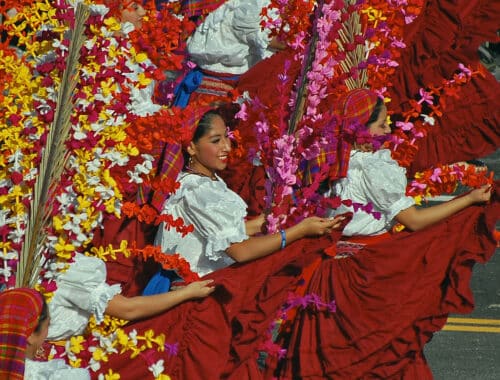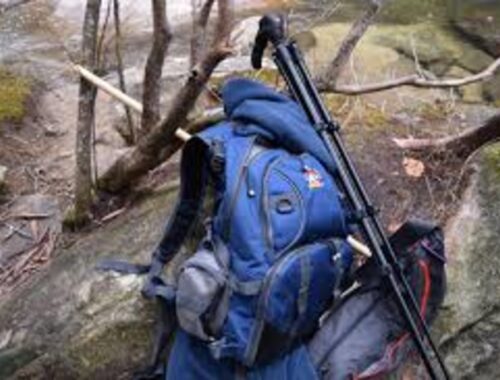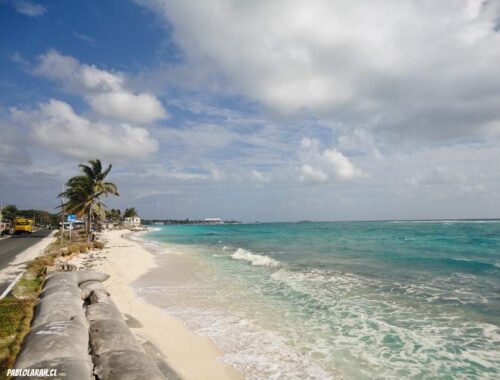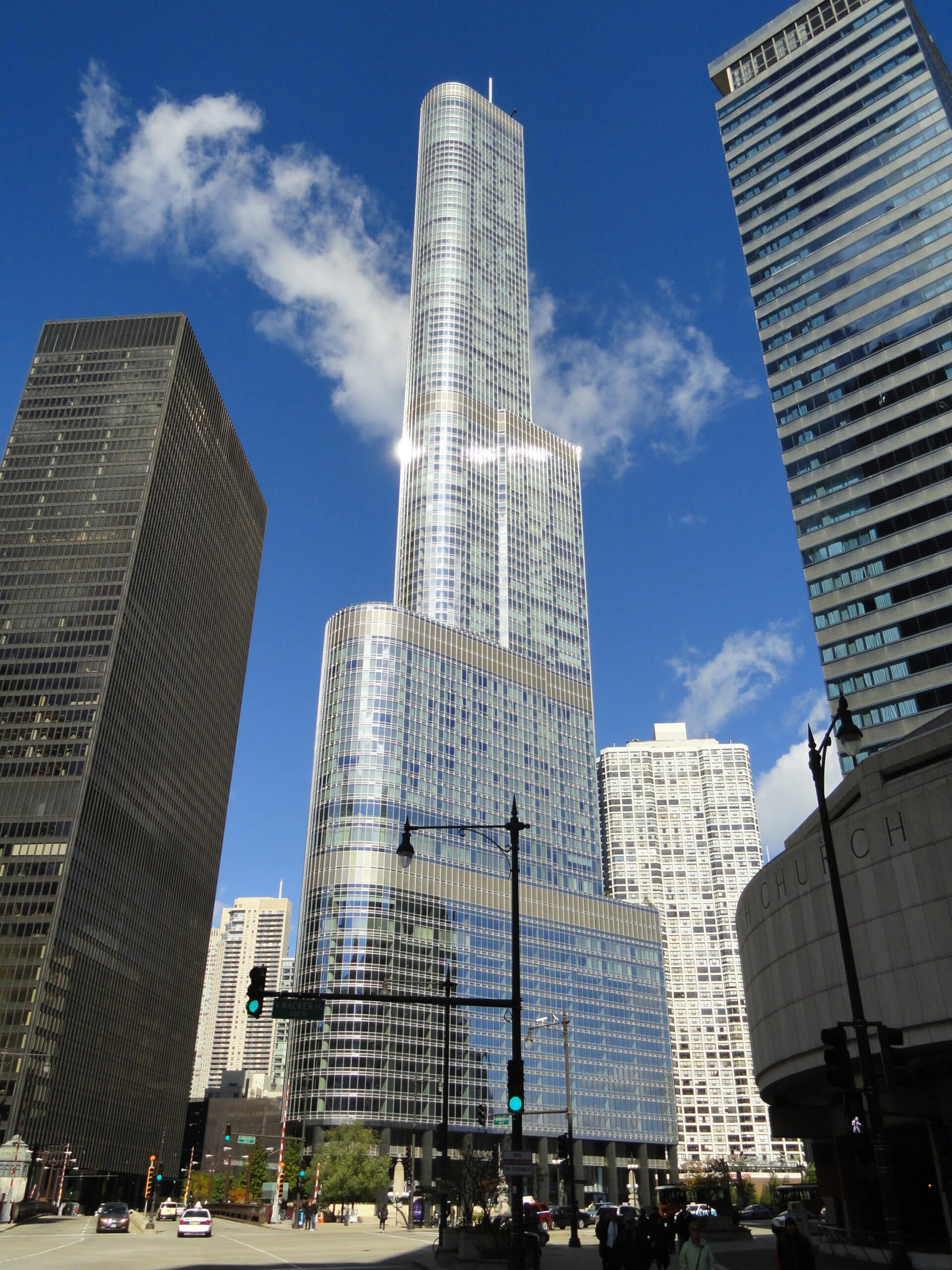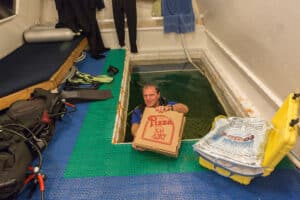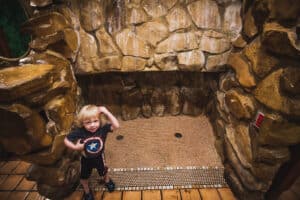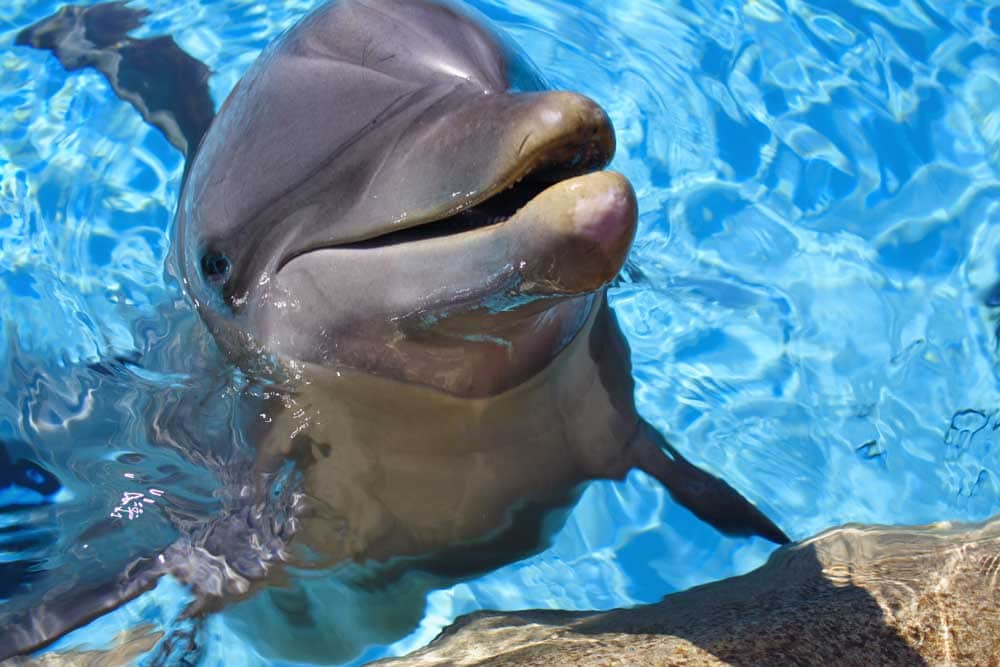Welcome to an extraordinary journey through some of the most unique hotels in the United States. In this series of articles, we’ll delve into the fascinating world of hospitality, where innovation meets imagination to create unforgettable experiences.
Why Unique Hotels Matter
In a world where cookie-cutter accommodations often dominate the landscape, unique hotels offer a breath of fresh air. They defy convention, inviting guests to step into a realm of creativity and adventure. From historic landmarks to whimsical wonders, each of these establishments has its own story to tell.
Exploring America’s Hospitality Landscape
The United States boasts a diverse array of landscapes, cultures, and histories, and its hotels reflect this richness. Whether you’re seeking a stay in a converted prison or a night beneath the stars in a luxury treehouse, there’s something for everyone in the land of opportunity.
What to Expect
Throughout this article, we’ll introduce you to ten of the most unique hotels in the USA. From coast to coast, we’ll uncover hidden gems that promise to delight and inspire. Get ready to embark on a journey like no other as we explore the extraordinary world of American hospitality.
The Wigwam Village Motel No. 6
Located in Holbrook, Arizona, the Wigwam Village Motel No. 6 offers a unique glimpse into American history and culture.
History and Architecture
Historical Significance: Built in the 1930s, the Wigwam Village Motel is a testament to roadside Americana.
Architecture: The motel features teepee-shaped rooms, reflecting the influence of Native American culture on American architecture.
Preservation: Despite its age, the motel has been meticulously preserved, allowing guests to step back in time and experience a piece of Americana.
Unique Features
Teepee-shaped Rooms: Each room is designed to resemble a traditional Native American teepee, providing a one-of-a-kind accommodation experience.
Authenticity: From the exterior design to the interior furnishings, the Wigwam Village Motel exudes authenticity, immersing guests in a bygone era.
Charm: Guests can expect a charming and nostalgic stay, surrounded by vintage decor and retro touches that harken back to a simpler time.
Guest Experience
Charming Atmosphere: Reviews and testimonials from guests often highlight the motel’s charming atmosphere and unique ambiance.
Memorable Stays: Many guests describe their experience at the Wigwam Village Motel as memorable and unforgettable, citing the opportunity to stay in a piece of history as a major highlight of their trip.
Authentic Hospitality: The motel’s staff are known for their warm hospitality and dedication to preserving the motel’s rich history, ensuring that every guest feels welcome and valued.
Dog Bark Park Inn
Nestled in Cottonwood, Idaho, the Dog Bark Park Inn is unlike any other hotel in the world, thanks to its distinctive canine-inspired design.
The Story Behind the Beagle
Unique Concept: The Dog Bark Park Inn was conceived by artists Dennis Sullivan and Frances Conklin, who transformed their love for dogs into a whimsical hotel experience.
World’s Largest Beagle: Standing at 30 feet tall, the Dog Bark Park Inn holds the Guinness World Record for the largest beagle-shaped structure.
Artistic Vision: Sullivan and Conklin’s vision was to create a truly unique lodging experience that celebrated their passion for art and dogs.
Quirky Amenities
Sleep Inside a Dog: Guests can spend the night inside the beagle’s belly, where cozy accommodations await.
Dog-Themed Decor: From dog-shaped cookies to canine-themed artwork, every aspect of the hotel is infused with doggy charm.
Unforgettable Experience: Visitors often describe their stay at the Dog Bark Park Inn as unforgettable, thanks to its quirky design and whimsical atmosphere.
Guest Reviews
Delightful Experience: Reviews and anecdotes from guests consistently praise the hotel’s creativity and charm.
Dog Lover’s Paradise: Dog enthusiasts in particular rave about the hotel’s unique concept and dog-friendly amenities.
Warm Hospitality: Sullivan and Conklin are known for their warm hospitality, ensuring that every guest feels welcome and pampered during their stay.
The Liberty Hotel
Located in Boston, Massachusetts, the Liberty Hotel offers guests a unique blend of history and luxury.
Historical Background
Former Prison: The building that now houses the Liberty Hotel was once the Charles Street Jail, a historic prison dating back to the mid-19th century.
Architectural Significance: Designed by renowned architect Gridley James Fox Bryant, the jail is a masterpiece of Victorian architecture, featuring imposing granite walls and a distinctive rotunda.
Transformation: In the early 2000s, the jail underwent a remarkable transformation, evolving from a house of incarceration into a five-star luxury hotel.
Unique Features
Preserved Architecture: Despite its conversion into a hotel, the Liberty Hotel has retained much of its original architectural integrity, including the jail’s iconic rotunda and prison bars.
Historic Touches: Throughout the hotel, guests will find subtle nods to its past, from the preserved jail cells in the lobby to the original catwalks that now serve as walkways between guest rooms.
Modern Amenities: Despite its historic charm, the Liberty Hotel offers all the modern amenities one would expect from a luxury accommodation, including spacious rooms, fine dining options, and a state-of-the-art fitness center.
Guest Experience
Blend of History and Luxury: Guests consistently praise the Liberty Hotel for its unique combination of historic ambiance and contemporary luxury.
Memorable Stays: Many visitors describe their experience at the Liberty Hotel as unforgettable, citing the opportunity to stay in a former jail as a highlight of their trip to Boston.
Exceptional Service: Testimonials from guests often highlight the hotel’s attentive staff and impeccable service, ensuring that every visitor feels like a VIP during their stay.
Jules’ Undersea Lodge
Situated in Key Largo, Florida, Jules’ Undersea Lodge offers guests the opportunity to sleep beneath the sea.
Submerged Accommodations
Underwater Setting: Jules’ Undersea Lodge is the world’s only hotel located entirely underwater, providing guests with a truly unique accommodation experience.
Scuba Access: To reach the lodge, guests must scuba dive through the crystal-clear waters of the Florida Keys, adding an element of adventure to their stay.
Immersive Experience: Once inside the lodge, guests can enjoy breathtaking views of the underwater world, surrounded by colorful coral reefs and a dazzling array of marine life.
Unique Features
Underwater Dining: Guests can dine in the lodge’s underwater restaurant, where they can enjoy gourmet meals while surrounded by the beauty of the ocean.
Marine Life Encounters: From tropical fish to curious sea turtles, guests at Jules’ Undersea Lodge have the opportunity to encounter a diverse array of marine creatures right outside their windows.
Exclusive Atmosphere: With only a limited number of guests allowed at any given time, Jules’ Undersea Lodge offers a secluded and intimate setting for those seeking a truly unforgettable experience.
Guest Experience
Once-in-a-Lifetime Adventure: Reviews and testimonials from guests often describe their stay at Jules’ Undersea Lodge as a once-in-a-lifetime adventure, praising the lodge for its unique setting and immersive experience.
Unparalleled Beauty: Many visitors are struck by the beauty of the underwater world surrounding the lodge, with some describing it as a truly magical and awe-inspiring environment.
Professional Staff: Despite its unconventional location, the staff at Jules’ Undersea Lodge are highly trained and dedicated to ensuring that every guest enjoys a safe and memorable stay beneath the sea.
Madonna Inn
Nestled in San Luis Obispo, California, the Madonna Inn is a whimsical retreat renowned for its flamboyant decor and eclectic charm.
A Feast for the Senses
Vibrant Atmosphere: From the moment you step inside, the Madonna Inn captivates visitors with its vibrant colors and extravagant design.
Unique Themes: Each of the inn’s rooms is meticulously themed and decorated, offering guests a one-of-a-kind experience. Whether you prefer a room with a rock waterfall shower or one adorned with pink velvet walls, there’s something to suit every taste at the Madonna Inn.
Unforgettable Experiences
Kitschy Charm: Guests often describe their stay at the Madonna Inn as enchanting and unforgettable, thanks to its whimsical decor and playful ambiance.
Instagram-Worthy: With its eye-catching design and quirky details, the Madonna Inn provides the perfect backdrop for memorable photos and cherished memories.
Attention to Detail: From the ornate furnishings to the elaborate bathrooms, every aspect of the Madonna Inn is designed to delight and surprise guests, ensuring a truly magical experience.
Guest Testimonials
Enthusiastic Reviews: Visitors from around the world rave about their experiences at the Madonna Inn, praising its unique charm and friendly staff.
Memorable Moments: Guests share anecdotes of their time at the inn, from romantic getaways to fun-filled family vacations, highlighting the lasting impression the Madonna Inn leaves on all who visit.
The Shady Dell Vintage Trailer Court
Located in Bisbee, Arizona, the Shady Dell Vintage Trailer Court offers a nostalgic journey back in time to the golden age of travel.
Retro Vibes
Step Back in Time: At the Shady Dell, guests can experience the nostalgia of the 1940s and 1950s, staying in meticulously restored vintage trailers from the era.
Authentic Atmosphere: From the retro furnishings to the classic decor, every detail is designed to transport guests to a bygone era of road trips and adventure.
Vintage Charm
Iconic Trailers: Each trailer at the Shady Dell is a piece of history, lovingly restored to its former glory and filled with retro charm.
Unique Accommodations: Whether you’re staying in a Spartan Manor or a Royal Mansion, you’ll enjoy all the comforts of home with a heaping dose of vintage flair.
Guest Stories
Nostalgic Memories: Travelers share their fond memories of staying at the Shady Dell, reminiscing about simpler times and carefree adventures on the open road.
Rave Reviews: From the cozy interiors to the friendly atmosphere, guests consistently praise the Shady Dell for its unique accommodations and warm hospitality.
At the Madonna Inn and the Shady Dell Vintage Trailer Court, guests can experience the magic of yesteryear while enjoying modern comforts and amenities. Whether you’re seeking a whimsical escape or a nostalgic journey, these unique hotels offer an unforgettable experience that’s sure to leave a lasting impression.
Treehouse Point
Nestled in Fall City, Washington, Treehouse Point offers a serene escape into the heart of the Pacific Northwest forest.
Tranquil Retreat
Nature’s Embrace: Surrounded by towering trees and the gentle sounds of nature, Treehouse Point provides a peaceful sanctuary for weary travelers.
Escape the Ordinary: Guests can leave behind the hustle and bustle of daily life and immerse themselves in the tranquility of the forest, finding solace among the branches.
Handcrafted Elegance
Artistic Accommodations: Each treehouse at Treehouse Point is a work of art, meticulously crafted by skilled artisans to blend seamlessly with the natural environment.
Rustic Luxury: Despite their rustic exterior, the treehouses are equipped with modern amenities, ensuring a comfortable and luxurious stay for guests.
Guest Reviews
Rave Reviews: Visitors consistently praise Treehouse Point for its idyllic setting, attentive staff, and enchanting accommodations.
Peaceful Retreat: Many guests share stories of finding inner peace and tranquility during their stay, citing the soothing sounds of the forest and the cozy comfort of their treehouse as highlights of their experience.
The Queen Mary
Docked in Long Beach, California, The Queen Mary is a historic ocean liner that has been transformed into a one-of-a-kind hotel experience.
A Floating Palace
Glamour and Grandeur: Step aboard The Queen Mary and be transported back to the golden age of ocean travel, where luxury and elegance reigned supreme.
Historic Significance: From its maiden voyage in 1936 to its service as a troopship during World War II, The Queen Mary has a rich history that is woven into every corner of the ship.
Majestic Accommodations
Stately Staterooms: Guests can choose from a variety of accommodations, including stately staterooms and elegant suites, each offering unparalleled views of the sea.
Timeless Charm: Despite its age, The Queen Mary has been lovingly preserved, allowing guests to experience the same glamour and sophistication that once graced its decks.
Guest Testimonials
Awe-Inspiring Experience: Visitors to The Queen Mary often describe their stay as awe-inspiring, with many guests expressing admiration for the ship’s beauty and historic significance.
Memorable Moments: From romantic evenings spent under the stars to family vacations filled with laughter and adventure, guests share stories of unforgettable experiences aboard The Queen Mary.
Concluding Thoughts
As we conclude our journey through the most unique hotels in the USA, we are reminded of the diversity and creativity that define the hospitality industry.
From treehouses in the forest to ocean liners on the high seas, each of these hotels offers a glimpse into a world of wonder and possibility. We encourage you to explore these hidden gems and embark on your own unforgettable adventure.
Whether you’re seeking tranquility among the trees or glamour on the open sea, the USA’s most unique hotels promise to delight and inspire. So pack your bags, and prepare to discover the magic that awaits at these extraordinary destinations.
Australia, a land of stunning diversity and vast distances, holds many secrets in its expansive landscapes. From bustling cities to sprawling deserts, the country showcases a range of environments. Among these varied settings, the concept of “isolated towns” emerges, capturing the imagination of adventurers and storytellers alike. These towns, often nestled in remote corners of the country, offer a glimpse into life far removed from the hustle and bustle of urban centers. Kiwirrkurra, a name not widely known outside of Australia, represents one such enigma. Isolated, enigmatic, and intriguing, Kiwirrkurra prompts us to explore what it means to be Australia’s most isolated town. But is it truly the most secluded? Let’s delve into the heart of Australia’s vast wilderness to uncover the truth about Kiwirrkurra.
Unveiling Kiwirrkurra: A Remote Outback Gem
A. Location and Landscape
Kiwirrkurra is nestled in the heart of Australia’s vast wilderness, epitomizing the essence of isolation. This remote community is situated in the Gibson Desert, Western Australia, making it one of the most secluded towns on the continent. Its geographical position is remarkable:
- Distance to Major Cities: Kiwirrkurra lies approximately 1,200 kilometers from Alice Springs and around 700 kilometers from Port Hedland. These distances underline its remoteness, with access being primarily through long, challenging dirt roads.
- Surrounding Environment: The Gibson Desert’s rugged terrain envelopes Kiwirrkurra, with its red sands, sparse vegetation, and ancient landscapes offering a stark yet breathtaking backdrop. This environment shapes the lives of its residents, intertwining with their culture and daily routines.
Visualizing Kiwirrkurra’s isolation can be challenging without a map. Imagine it as a solitary dot amidst a vast expanse of untouched wilderness, miles away from the nearest city or town, where the desert’s silence is a constant companion.
B. Population and Culture
Kiwirrkurra’s population is small, with residents primarily consisting of Pintupi Aboriginal Australians. This tight-knit community numbers just a few dozen, making it one of the least populated towns in the country. The demographic makeup underscores a deep connection to the land and ancestral traditions.
- Cultural Background: The inhabitants of Kiwirrkurra maintain a profound bond with their heritage. The Pintupi people are known for their rich cultural history, which includes intricate art, deep spiritual practices, and a strong sense of community. They have inhabited this region for thousands of years, living in harmony with the harsh, unforgiving landscape.
- Unique Cultural Aspects: Kiwirrkurra is renowned for its contribution to Aboriginal art, with many community members being skilled artists. Their work often reflects the stories, traditions, and landscapes that are integral to their identity. Additionally, traditional practices and ceremonies continue to play a significant role in the community, preserving a way of life that has been passed down through generations.
Factors Contributing to Isolation
The isolation of Kiwirrkurra, often regarded as Australia’s most secluded town, isn’t just about geographic remoteness. Several key factors compound its isolation, affecting everything from daily life to how emergencies are handled. Understanding these factors offers insight into the resilience and adaptability of its residents.
A. Accessibility and Transportation
Getting to Kiwirrkurra is no small feat. The journey involves navigating through vast distances, often on unsealed roads that can become impassable in adverse weather conditions. This journey highlights several challenges:
- Challenges of Road Travel: The primary route to Kiwirrkurra includes long stretches of unsealed roads, demanding a high level of preparedness and a suitable vehicle. Seasonal weather changes can dramatically affect travel conditions, sometimes isolating the community for weeks.
- Lack of Public Transportation: There are no public transportation services to or from Kiwirrkurra, leaving residents to rely on private vehicles for ground transport. For longer distances, chartered flights become necessary, as commercial airlines do not service the area.
- Proximity to Airports and Highways: The nearest major airport is in Alice Springs, roughly 1,200 kilometers away, emphasizing the town’s isolation. Access to major highways is similarly remote, with the closest significant road being hundreds of kilometers away.
These transportation challenges not only make Kiwirrkurra hard to reach but also significantly impact the mobility of its residents, especially in terms of accessing services and resources not available locally.
B. Amenities and Services
The isolation of Kiwirrkurra extends into the availability of amenities and services that many take for granted. The town’s residents face unique challenges due to this limited availability:
- Limited Local Amenities: Kiwirrkurra lacks many common amenities. There are no supermarkets, hospitals, or conventional schools within the community. This scarcity requires residents to plan meticulously, often traveling long distances to access these services.
- Coping with Limitations: Residents have adapted to these challenges through a combination of self-sufficiency and reliance on services provided remotely. Basic healthcare and education, for example, are managed through remote services and occasional visits by specialists. Supplies are often ordered in bulk and delivered from far-off towns.
This self-reliant lifestyle necessitates a strong community spirit and an intricate understanding of the local environment. The residents of Kiwirrkurra have developed a resilient and adaptive community, capable of thriving under conditions that many would find daunting. The limited access to amenities and services, while challenging, has fostered a unique way of life that values community, resilience, and a deep connection to the land.
Life in Kiwirrkurra: Challenges and Rewards
Living in Kiwirrkurra, a town enveloped by the vast expanses of the Australian desert, presents a lifestyle that is as challenging as it is rewarding. Residents navigate a unique set of circumstances that test their resilience daily, while also embracing the profound benefits that come with their remote location.
A. Challenges of Remote Living
Life in Kiwirrkurra is not without its hardships. The town’s extreme remoteness introduces several challenges:
- Limited Resources: With the nearest supermarkets and shops hundreds of kilometers away, obtaining everyday necessities requires significant planning and effort. This scarcity extends to water and food supplies, which are critical given the harsh desert environment.
- Harsh Desert Environment: The Gibson Desert presents a formidable natural setting. Extreme temperatures, scarce water sources, and unpredictable weather conditions test the survival skills of its inhabitants.
- Health Concerns: Proximity to medical facilities is a significant concern. The closest hospitals are in Alice Springs, over a thousand kilometers away, making access to immediate medical care a challenge, especially for chronic conditions or emergencies.
- Social Isolation: The small population and isolation can lead to feelings of social isolation. With few opportunities for new social interactions and limited entertainment options, residents must find solace within the community and the natural world around them.
Despite these difficulties, the people of Kiwirrkurra have cultivated a resilient and adaptive community, facing these challenges with a spirit of togetherness and innovation.
B. Rewards of a Remote Lifestyle
Amidst the challenges, Kiwirrkurra offers its inhabitants a range of unique benefits that can only be found in such a secluded environment:
- Peace and Tranquility: The isolation of Kiwirrkurra provides peace and tranquility that is rare in today’s fast-paced world. The silence of the desert, the beauty of the starlit sky, and the simplicity of life here offer a profound sense of serenity.
- Strong Connection to Nature: Residents enjoy a deep connection to the land. The vast landscapes, rich wildlife, and pristine natural environment offer daily reminders of the beauty and power of nature.
- Close-knit Community Bonds: In a small community like Kiwirrkurra, strong bonds form between residents. This close-knit atmosphere fosters a sense of belonging and support, where neighbors are like family.
- Self-reliance and Traditional Practices: The lifestyle here encourages self-reliance, with opportunities for traditional hunting and gathering practices. This not only sustains physical needs but also keeps cultural traditions alive, connecting residents to their ancestors and the land.
- A Simpler Way of Life: Life in Kiwirrkurra offers a chance to escape the complexities of modern living. The focus on essential needs and community well-being provides a clearer perspective on what truly matters in life.
Conclusion
Throughout this exploration of Kiwirrkurra, we’ve delved into the essence of what makes this town a unique embodiment of isolation. From its geographical challenges and the robust spirit of its community to the profound tranquility and connection to nature, Kiwirrkurra stands as a testament to life at the edge of modernity’s reach. The question of whether it is truly the most isolated town in Australia is one that goes beyond mere physical distances, inviting us to reflect on the nuances of what isolation truly means. Is it the geographical remoteness, the scarcity of amenities, or the depth of cultural preservation that defines the ultimate form of isolation? This question remains open-ended, prompting a personal journey of understanding and appreciation for places like Kiwirrkurra.
FAQ (Frequently Asked Questions)
Is Kiwirrkurra safe to visit (considering remoteness and cultural sensitivity)?
Yes, Kiwirrkurra is safe to visit, provided that visitors are mindful of its remoteness and cultural sensitivities. Prospective travelers should approach the community with respect for its traditions and practices.
What activities can I do in Kiwirrkurra (respectful cultural experiences, nature walks)?
Visitors to Kiwirrkurra can engage in a variety of activities that respect the local culture and environment:
- Participate in guided cultural experiences to learn about the Pintupi way of life.
- Enjoy nature walks through the stunning desert landscape, observing the unique flora and fauna.
Do I need special permits to visit Kiwirrkurra (respecting Aboriginal land rights)?
Yes, visitors typically need to obtain permits to visit Kiwirrkurra, as it is situated on Aboriginal land. This process respects the land rights and cultural significance of the area to its Indigenous inhabitants.
What is the best time of year to visit Kiwirrkurra (considering weather conditions)?
The best time to visit Kiwirrkurra is during the cooler months of April through September. During this period, the desert temperatures are more moderate, making outdoor activities and exploration more comfortable.
What are the essential things to pack for a trip to Kiwirrkurra (sunscreen, hat, proper clothing for desert climate, basic medical supplies)?
When packing for Kiwirrkurra, consider including:
- Sunscreen and a hat to protect against the intense sun.
- Clothing suitable for a desert climate, including lightweight, long-sleeved shirts and pants.
- Basic medical supplies, given the remoteness and limited access to medical facilities.
Visiting Kiwirrkurra offers a unique opportunity to immerse oneself in a setting defined by its isolation, natural beauty, and cultural richness. It’s a journey that requires preparation, respect, and an open heart, promising an unforgettable experience of Australia’s remote outback.
Whether you’re doing it for personal aesthetics or better health, losing healthy amounts of weight is an admirable goal. However, staying consistent with your objectives can be especially difficult if you’re going on a trip soon. After all, traveling is all about rest, relaxation, and discovery. Continue Reading

